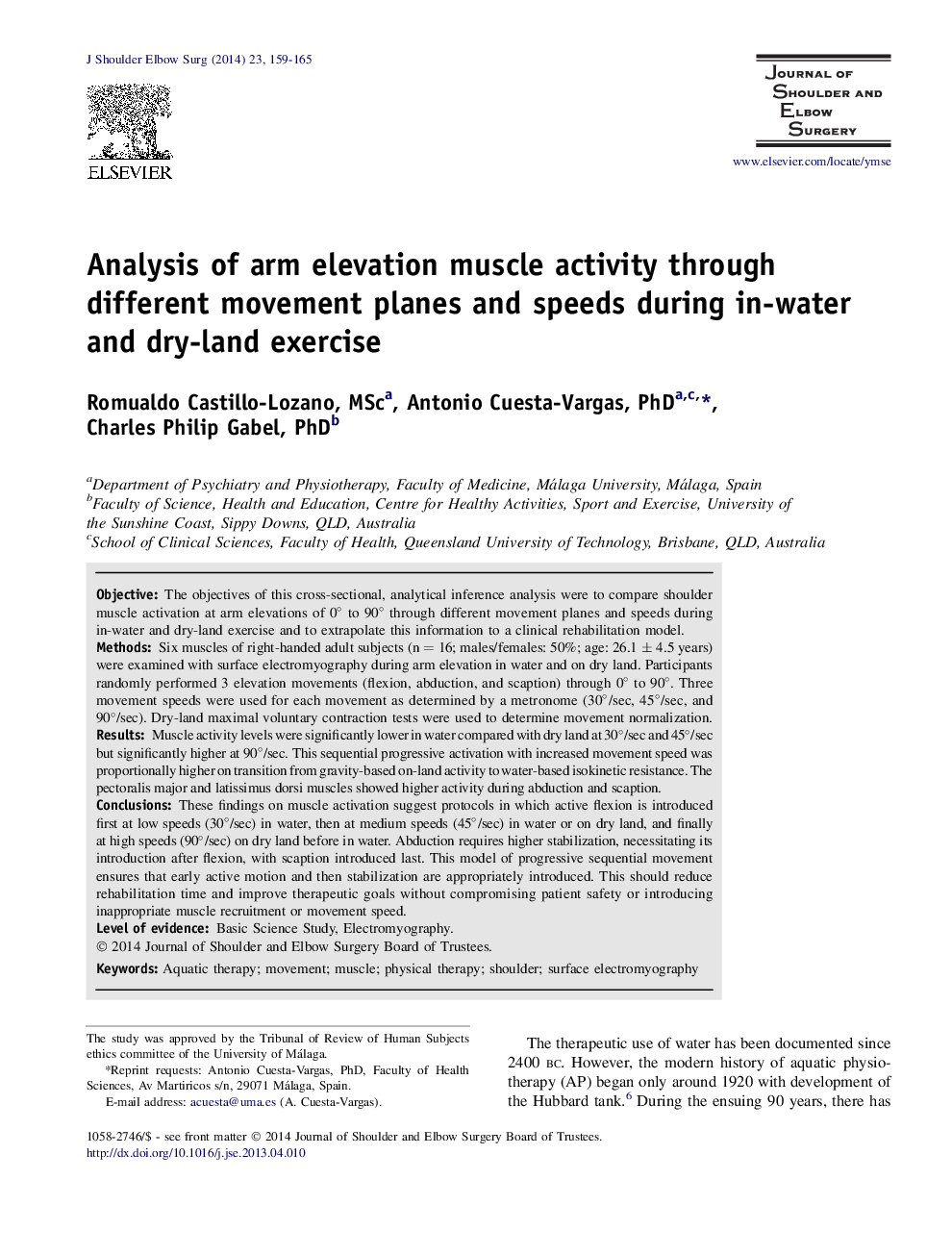| کد مقاله | کد نشریه | سال انتشار | مقاله انگلیسی | نسخه تمام متن |
|---|---|---|---|---|
| 4073886 | 1266993 | 2014 | 7 صفحه PDF | دانلود رایگان |
ObjectiveThe objectives of this cross-sectional, analytical inference analysis were to compare shoulder muscle activation at arm elevations of 0° to 90° through different movement planes and speeds during in-water and dry-land exercise and to extrapolate this information to a clinical rehabilitation model.MethodsSix muscles of right-handed adult subjects (n = 16; males/females: 50%; age: 26.1 ± 4.5 years) were examined with surface electromyography during arm elevation in water and on dry land. Participants randomly performed 3 elevation movements (flexion, abduction, and scaption) through 0° to 90°. Three movement speeds were used for each movement as determined by a metronome (30°/sec, 45°/sec, and 90°/sec). Dry-land maximal voluntary contraction tests were used to determine movement normalization.ResultsMuscle activity levels were significantly lower in water compared with dry land at 30°/sec and 45°/sec but significantly higher at 90°/sec. This sequential progressive activation with increased movement speed was proportionally higher on transition from gravity-based on-land activity to water-based isokinetic resistance. The pectoralis major and latissimus dorsi muscles showed higher activity during abduction and scaption.ConclusionsThese findings on muscle activation suggest protocols in which active flexion is introduced first at low speeds (30°/sec) in water, then at medium speeds (45°/sec) in water or on dry land, and finally at high speeds (90°/sec) on dry land before in water. Abduction requires higher stabilization, necessitating its introduction after flexion, with scaption introduced last. This model of progressive sequential movement ensures that early active motion and then stabilization are appropriately introduced. This should reduce rehabilitation time and improve therapeutic goals without compromising patient safety or introducing inappropriate muscle recruitment or movement speed.
Journal: Journal of Shoulder and Elbow Surgery - Volume 23, Issue 2, February 2014, Pages 159–165
